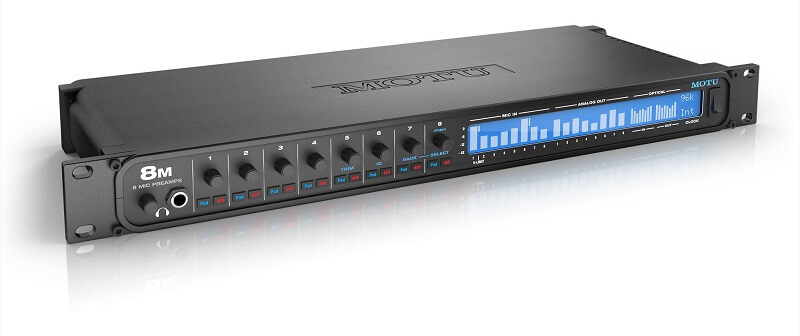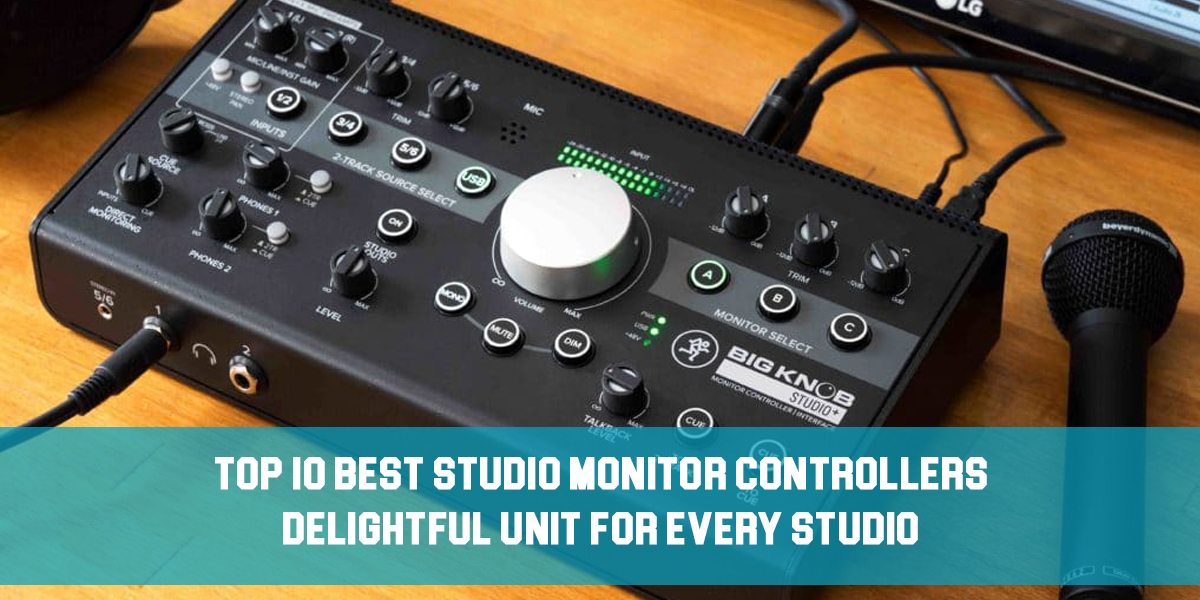Top 10 Best Thunderbolt Audio Interfaces
Introduction
Thunderbolt is primarily used with audio interfaces for Mac computers, but there’s a growing number of PCs on the market that are now compatible as well.
Thunderbolt connectivity—especially Thunderbolt 3—offers several impressive benefits. For example, it lets users connect up to six devices to a single port without losing any transfer speed.
In addition, Thunderbolt connections are generally much faster than USB 2.0, 3.0, or 3.1, so you’re less likely to run into latency issues with these interfaces.
Most Thunderbolt audio interfaces available today still use the Thunderbolt 2 protocol. However, some manufacturers, like Universal Audio, have started to adopt Thunderbolt 3. You’re probably wondering if this makes a real difference.
Looking at bandwidth, Thunderbolt 3 actually doubles the bandwidth compared to Thunderbolt 2. Thunderbolt 2 (using a paired connection) allows up to 20 Gbps, while Thunderbolt 3 can deliver up to 40 Gbps.
Another key difference is that Thunderbolt 3 can provide up to 100 Watts of power to devices.
Some devices, such as the Universal Audio Arrow, can be completely bus-powered. However, audio interfaces that require more than 100 Watts will still need an additional power source. So, are Thunderbolt 3 audio interfaces worth it?
Just so you know, we’ll be listing these Thunderbolt audio interfaces in no particular order. They’ll be randomized because we don’t want to rank them from best to worst.
Listed below are our Top 10 Best Thunderbolt Audio Interfaces:
1. Universal Audio Apollo Twin X Quad Heritage
Designed to be the centerpiece of your home studio or portable setup, the Universal Audio Apollo Twin X QUAD Heritage Edition is a desktop 10×6 Thunderbolt 3 audio interface that brings the sound, feel, and workflow of classic analog studio recording to your fingertips. It features powerful QUAD Core real-time UAD processing and comes bundled with 25 top-tier UAD plug-ins.
Equipped with elite 24-bit / 192 kHz conversion technology similar to the renowned Apollo X rackmount interfaces, the Apollo Twin X QUAD delivers musicians, producers, songwriters, and audio engineers pristine, high-resolution recording and mixing, with ultra-low distortion (-117 dB) and an impressive dynamic range (127 dB).
The interface offers two XLR-1/4″ mic/line combo inputs and a 1/4″ Hi-Z input, all with Unison integration. This lets you take advantage of exact UAD emulations of classic analog preamps, giving your microphone and instrument recordings the timeless character you want—without the unpredictability of vintage gear.
With switchable low-cut filter, pad, polarity inversion, 48V phantom power, and stereo linking on each analog input, you can quickly and easily optimize your incoming signals using the handy buttons on the Apollo Twin X QUAD’s front panel. Beyond the two main analog inputs, you can record up to eight additional channels by connecting external preamps with ADAT or S/PDIF optical outputs to the TOSLINK optical input port on the Apollo Twin X QUAD.
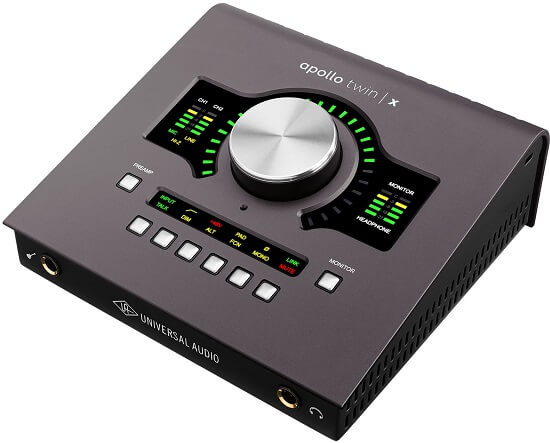
- 24 bit / 192 kHz AD/DA converter
- 2 Unison microphone preamplifiers
- +48 V Phantom power
- Integrated talkback microphone
| For US Customers | For EU Customers | |||
|---|---|---|---|---|
Universal Audio Apollo Twin X Quad Heritage |
2. MOTU 828ES
The MOTU 828es is certainly not a budget audio interface. This rack-mounted device offers USB 2.0, Thunderbolt, and AVB connectivity options. It’s designed for professional use and delivers high-quality recording performance.
Still, the 828es is considered an intermediate model in MOTU’s Thunderbolt/USB/AVB lineup. The flagship models cost up to 50% more than the 828es. As a recent addition to the series, the 828es strikes a great balance between price and the performance quality that MOTU interfaces are known for.
The 828es is a relatively new model and is the direct successor to the popular 828 Mk. III. It features more intuitive control software, an upgraded processor, and a slightly easier learning curve.
This model is the first of MOTU’s larger audio interfaces to include two preamps on the front panel. Earlier versions had preamps located on the back. It also offers versatile connectivity, with Thunderbolt, USB 2.0, and AVB ports included.
The front panel is equipped with control room buttons, such as A and B speaker selectors (which let you check mixes on two sets of monitors), as well as mute, talk, mono, and Net ID buttons.
The 828es comes with classic reverb and compression, similar to the LA-2A compressor. The EQ is inspired by British analog consoles. With a DSP engine that offers plenty of headroom, this interface delivers outstanding quality.

- 24 Bit / 192 kHz
- ESS Sabre32 Ultra DAC technology
- Integrated DSP for EQ, Compressor and Reverb
- 2 XLR/Jack 6.3 mm mic/guitar inputs with integrated hardware limiter
- Thunderbolt connector (compatible with TB 1 and 2)
| For US Customers | For EU Customers | |||
|---|---|---|---|---|
MOTU 828ES |
|
3. Presonus Quantum 2626 Interface
This unit features eight front-panel XLR-1/4-inch combo inputs. Channels 1 and 2 can handle either mic or Hi-Z signals, while channels 3 through 8 are designed for mic or line-level sources. It’s rare to see an interface with eight inputs right on the front, which is especially handy for home studios that don’t have patch bays.
Each channel also has its own front-panel Gain knob, paired with an LED that lights up green, yellow, or red depending on the input level. While the metering isn’t fancy, it gets the job done. For more detailed input metering, you can use the included Universal Control software, which provides ladder-style meters for every input and output channel.
The Gain knobs are arranged in a staggered, diagonal pattern rather than a straightforward top row for channels 1-4 and a bottom row for 5-8. This layout was confusing at first, especially when reaching for a channel without looking directly at the panel, but we got used to it over time.
The preamps are PreSonus’ XMAX models, which the company promotes for their clean sound, low noise, and 115 dB of dynamic range. Phantom power is switchable in two groups: channels 1-4 and channels 5-8.
Other front-panel controls include a large Main knob for the monitor outputs, as well as two separate gain controls for the pair of 1/4-inch TRS headphone outputs. The power status indicator shows blue when the interface is properly synced to a clock source, and red when it isn’t.

- 2 Combo input sockets (mic / instrument) and 6x mic / line inputs
- 8 x 6.35 mm TRS line outputs, galvanically coupled
- 2 x 6.5 mm TRS jack sockets for the main outputs
- 2 x ADAT optical as well as S / PDIF, MIDI and BNC word clock I / Os
- Insert for channels 1 and 2
| For US Customers | For EU Customers | |||
|---|---|---|---|---|
PreSonus Quantum 2626 Interface |
4. Focusrite Clarett 8Pre 18×20
Focusrite continues its impressive audio legacy with the Clarett 8Pre, a standout product in the company’s Thunderbolt-based Clarett interface lineup. The Clarett 8Pre is a 1U, 18-in/20-out audio interface featuring eight mic preamps, high-quality A/D and D/A conversion at sample rates up to 192 kHz, and exceptionally low latency. The result is an affordable, user-friendly Thunderbolt interface that sounds great, making it the perfect foundation for a mid-level studio or portable recording setup.
The Clarett 8Pre is housed in a sleek 1U rack-mount chassis. It offers eight analog inputs, ten analog outputs, stereo S/PDIF I/O, and eight channels of ADAT I/O. Two front-panel mic/line/instrument inputs provide quick access, even when the unit is racked. There’s also a BNC word clock output to sync external digital gear to the interface. However, the lack of a word clock input makes it difficult to slave the Clarett to another system.
The rear panel also includes MIDI in and out. If you need extra ADAT I/O, consider the Clarett 8PreX, which offers 26 inputs and 28 outputs, as well as 16 ADAT inputs and outputs. The 8PreX, $300 more than the 8Pre, also gives you 48V phantom power switches on each channel, while the 8Pre provides bank switching for channels 1-4 and 5-8.
Clarett’s impressively quiet mic pres boast a notable 118 dB dynamic range, a 20 Hz–20 kHz frequency response, and 57 dB of gain. Each mic pre includes Focusrite’s AIR feature, which can be activated independently on every channel using the Focusrite Control software. When AIR is engaged, the preamp’s impedance changes, delivering a “transformer resonance effect” that adds the air and clarity of a classic transformer mic preamp—like Focusrite’s own ISA preamp.

- 8 Clarett Mic-Preamps with Air-Mode
- Low-noise (-128dB EIN)
- 118 dB dynamic range
- +48V Phantom Power
- DIM and Mute Function
| For US Customers | For EU Customers | |||
|---|---|---|---|---|
Focusrite Clarett 8Pre 18×20 |
5. RME Fireface UFX+
The UFX+ packs an incredible amount of I/O. On the analog side, you get four XLR/TRS combo jacks on the front of the unit, plus eight line-level inputs on the back. For outputs, there are six TRS and two XLR jacks on the back, along with two headphone outputs on the front.
If math isn’t your strong suit, that brings the UFX+ to a total of 12 analog inputs and outputs, counting each headphone jack as two outputs. The digital I/O options take things even further, offering 64 channels over MADI and 16 channels via ADAT.
Completing the I/O lineup are single AES3 digital input and output XLRs, which pushes the grand total to 94 inputs and outputs. The layout between the back and front panels makes sense: the more frequently swapped connections are on the front, while the more permanent options are tucked away on the back.
Up front, you’ll find the four mic preamps with combo jacks, both headphone outputs, a pair of MIDI I/O jacks, and a USB slot for memory. The most noteworthy addition is the USB port, which lets you record directly to a thumb drive or external hard drive, either as your main recording method or a backup.
Originally introduced in 2011 with the UFX, DURec (Direct USB Recording) has been greatly improved in the UFX+. The technology now supports up to 76 simultaneous channels of recording and playback.
If you’re running the UFX+ with a computer, whether in the studio or on stage, you get access to RME’s TotalMix software. TotalMix has become much more advanced over time and works smoothly with all RME interfaces, presenting little to no issues in use.
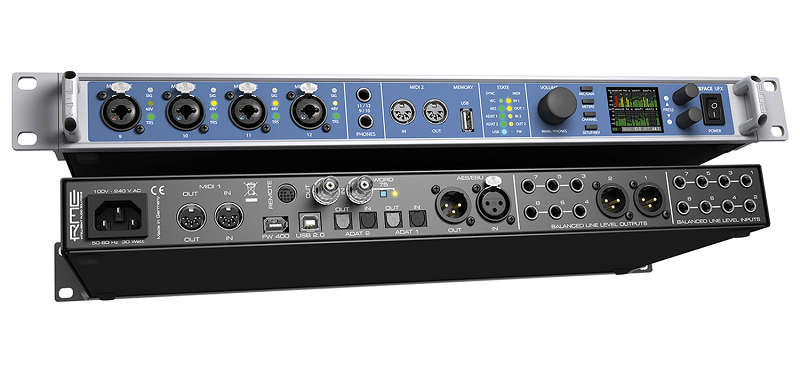
- Integrated monitor controller
- SteadyClock
- DIGICheck
- Stand-alone operation with Setup Recall
- Colour display on the front
| For EU Customers | |||
|---|---|---|---|
RME Fireface UFX+ |
|
6. Steinberg AXR4
The audio industry is evolving rapidly, and the AXR4 Thunderbolt 2 Audio Interface stands out as a leader by embracing some of the latest technologies. With Thunderbolt connectivity, it offers some of the fastest data transfer speeds on the market and supports recording at up to 32-bit/384kHz when needed.
It also includes top-tier preamps, along with SSPLL jitter reduction technology for high-quality audio. On top of that, the AXR DSP mixing software provides an additional mixing matrix before your DAW, offering expanded routing, audio processing, and monitoring options. The AXR4 is suitable for any engineer in the world, but its price reflects its premium features. However, considering everything packed into this 1U unit, you might never need another interface.
Despite its extensive list of specs, flagship technologies, and features, the AXR4 only takes up a single rack space. So, if you decide to purchase a second unit, together they’ll occupy just two spaces. The AXR4 offers a maximum of 28 inputs and 24 outputs when fully expanded through the D-sub or digital connections on the back.
On the front panel, you’ll find four preamps, each with combo XLR/jack inputs. All four preamps feature emulations of the renowned Rupert Neve Designed SILK processing, found on high-end Rupert Neve Designs equipment. These onboard preamps allow you to connect microphones or plug in guitars, basses, or keyboards directly. Thanks to the Thunderbolt 2 connection, you can use plugins to record or monitor your takes with ultra-low latency.
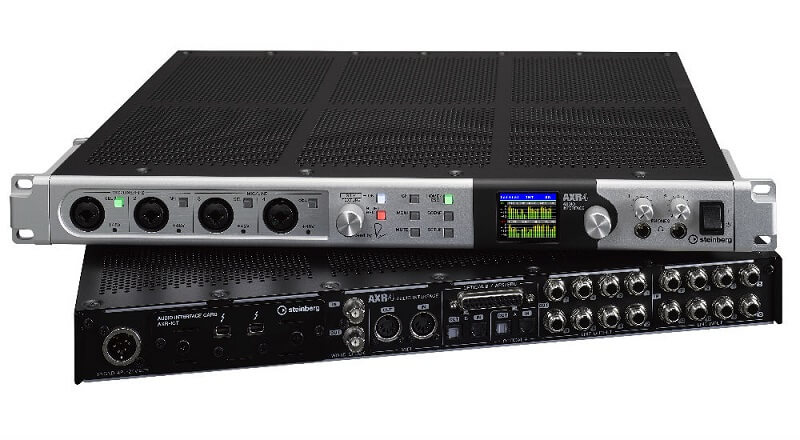
- 2 Mic / Line / Instrument combo inputs: 6.3 mm XLR / jack
- 2 Mic / Line combo inputs: 6.3 mm XLR / jack
- 8 Line inputs: 6.3 mm Jack
- 8 Line outputs: 6.3 mm Jack
- 2 ADAT / S/PDIF inputs and outputs
- AES/EBU Sub-D25
| For US Customers | For EU Customers | |||
|---|---|---|---|---|
Steinberg AXR4 |
|
7. Lynx Aurora (n) 24-TB3
The U.S.-made Lynx Studio Technology Aurora(n) line represents a major leap forward in performance, flexibility, channel count, features, and value for A/D and D/A converters. This brand-new 1RU modular platform is a complete redesign of the original Aurora. It is available in versions supporting anywhere from 8 to 32 inputs, with connectivity options including USB, Pro Tools|HD and HDX, Thunderbolt, and Dante.
Lynx has designed its new Aurora(n) 192 kHz/24-bit converters to be future-proof. Digital audio gear is a significant investment for any owner, but with Aurora(n), you aren’t locked into a fixed configuration. Thanks to FPGA chip technology, modular design, and Lynx’s new L-Slot expansion cards, you can stay current with firmware updates and reconfigure your system as your needs grow, maximizing your investment.
The Aurora(n) line launches with a choice of three modules — digital (AES3+DAT), mic preamp, and analog summing — with more options planned for the future. Its forward-thinking design allows you to start with eight, sixteen, or twenty-four channels and later add inputs and outputs in groups of eight. If you decide to switch your recording platform (Lynx supports both OSX and Windows) or add network connectivity, you can simply swap out the LSlot card for another type of connection.
To match the high performance of these new converters, Lynx has also included two audiophile-quality headphone outputs, each with independent level controls. Uniquely, every Aurora(n) model features an onboard Micro SD player/recorder, offering up to 32 channels of direct recording and playback. The front panel’s TFT LCD shows levels and functions, and it is ready to support future upgrades.
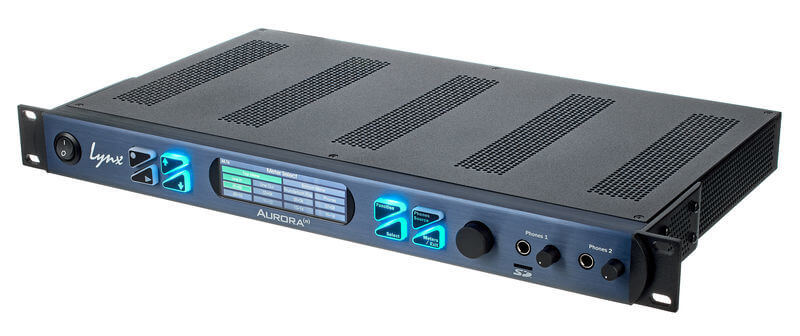
- 2 Audiophile headphone outputs with independent volume controls
- 1 IN & 3 OUT word clock with Lynx SynchroLock 2 technology
- Remote control of all functions via NControl software
- Windows and OSX compatibility
| For US Customers | For EU Customers | |||
|---|---|---|---|---|
Lynx Aurora (n) 24-TB3 |
|
8. Universal Audio Apollo Solo TB3 Heritage Ed
The Universal Apollo Solo Heritage Edition offers all the advantages of the popular Apollo Solo, including industry-leading UA audio conversion, two Unison mic preamps, and SOLO Core real-time UAD plug-in processing. It goes even further by including a software suite of five award-winning UAD plug-in titles, featuring collections from Teletronix, Pultec, and UA.
A standout feature of the Apollo is its real-time UAD Processing, which lets you run the full library of UAD plug-ins with near-zero latency. The Apollo Solo Heritage Edition takes this further by including five premium plug-in titles valued at over $1,300. This bundle features the complete collections of UA’s Teletronix and 1176 compressors, all Pultec EQs, UA 610 Unison mic preamps, and Pure Plate Reverb. These exclusive Heritage Edition titles are in addition to Apollo Solo’s included “Realtime Analog Classics” bundle, giving you the most comprehensive library of classic analog emulations available with any professional audio interface.
The Apollo Solo Heritage Edition comes with two Unison-enabled mic preamps, allowing you to record through spot-on mic preamp emulations from Neve, API, Manley, SSL, Avalon, Helios, and Universal Audio. Unique to Universal Audio, Unison is a proprietary hardware-software integration that perfectly captures the tone of sought-after tube and solid-state mic pres, including their input impedance, gain stage “sweet spots,” and component-level circuit behaviors.
Unison technology is also available on Apollo Solo’s front-panel Hi-Z instrument input, providing precise impedance and gain matching for guitar and bass amp models from Fender, Marshall, Ampeg, and more.
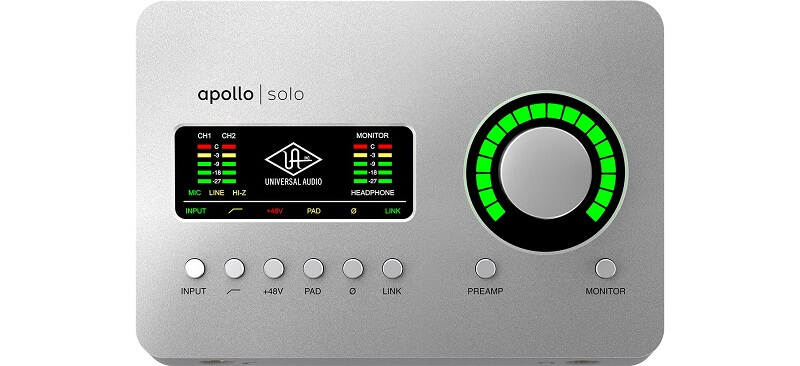
- 2 Microphone/Line combo inputs: XLR/Jack 6.3 mm
- Hi-Z instrument input: 6.3 mm jack
- Stereo headphone output: 6.3 mm jack
- 2 Line outputs: 6.3 mm jack (L/R)
- Requires Thunderbolt 3 connector, adapter are not supported
| For US Customers | For EU Customers | |||
|---|---|---|---|---|
Universal Audio Apollo Solo TB3 Heritage Ed |
9. Antelope Zen Q Synergy Core
Antelope Audio interfaces are known for packing in powerful features like high-quality conversion and clocking, a suite of built-in real-time effects, and DSP mixing. The new Zen Q Synergy Core continues this tradition.
The Zen Q is a compact tabletop interface, measuring just under 8 inches wide and weighing less than 2 pounds. Antelope describes it as the “big brother” to the earlier Zen Go Synergy Core. Both are portable and bus-powered, but the Zen Q offers more I/O options and Thunderbolt 3 connectivity, making it even faster than the USB-C Zen Go.
On top of the unit, you’ll find digital meters and several key control buttons. The included Control Panel software gives you full access to all the Zen Q’s features.
The Zen Q offers four analog inputs: two mic/line/Hi-Z combo jacks on the back panel and two 1/4-inch Hi-Z instrument inputs on the front. Outputs include two 1/4-inch TRS monitor outs and a pair of 1/4-inch TRS line outs. Rounding out the analog connections are two independently adjustable 1/4-inch TRS stereo headphone outputs.
Another appealing aspect of the Zen Q is the bundle of 37 free plugin effects that come with it. These include Auraverb (Reverb), VCA160 (VCA Compressor/Limiter), FET-A76 (FET Compressor/Limiting Amplifier), BA-31 (Germanium Mic Preamp), Tweed Deluxe (Tube Guitar Amp), Plexi 59 (Tube Guitar Amp), and many more.
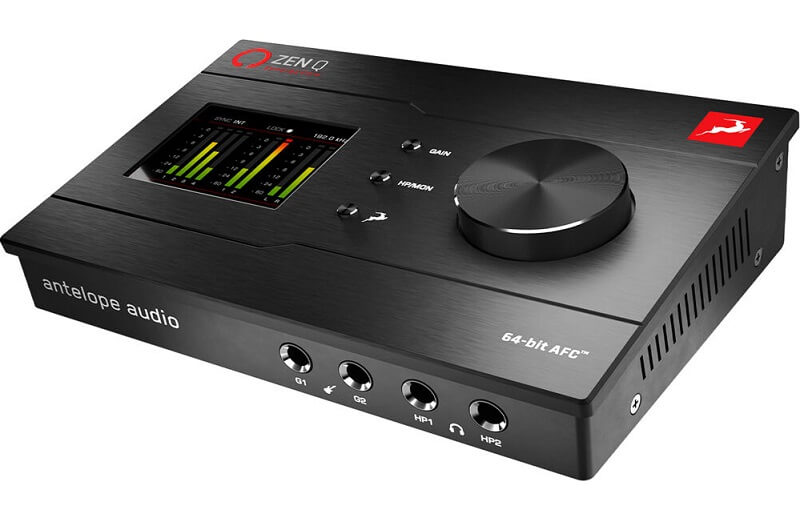
- 2 Discrete ultra-linear preamps with 65 dB gain and 48 V phantom power
- With 37 analogue modelled Synergy Core effects
- Proprietary 64-bit Acoustically Focused Clocking (AFC) technology
- Synergy Core onboard platform with 2x DSP & 1x FPGA chip
| For EU Customers | |||
|---|---|---|---|
Antelope Zen Q Synergy Core |
10. MOTU 8M AVB
The MOTU 8M – Thunderbolt and USB Audio Interface with AVB Networking and DSP (24×26, Eight Mic/Line/Instrument) is designed for studio recording, sound input, and live sound reinforcement applications, such as mixing a band in a club or music venue.
This 1U, 19″ rack-mountable unit features eight balanced combo microphone/line/instrument inputs, each with individually switchable +48V phantom power and pads, as well as v-limiting circuitry to prevent clipping. It also includes eight analog outputs, a front-panel stereo headphone output with gain control, two 8-channel ADAT optical ports, and RCA S/PDIF (with sample rate conversion). You can expand the I/O through AVB networking.
The interface uses ESS Sabre32 Ultra converters to deliver a dynamic range of 123 dB (A-weighted, 20 to 20,000 Hz) on the balanced TRS analog outputs, a THD+N rating of -110 dB, and total system latency of just 32 samples (0.66 ms) while recording at resolutions up to 24-bit/192 kHz. The front-panel backlit 324 x 24 LCD provides detailed metering for all analog and digital I/O, as well as a GUI for adjusting hardware settings.
With Thunderbolt connectivity, the interface can stream 128 audio channels in and 128 channels out to the physical outputs, the DSP-powered 48-channel routing matrix, or AVB audio network streams. The interface also supports high-speed USB 2.0 (compatible with 3.0) using class-compliant drivers, allowing it to work with most digital audio workstations.
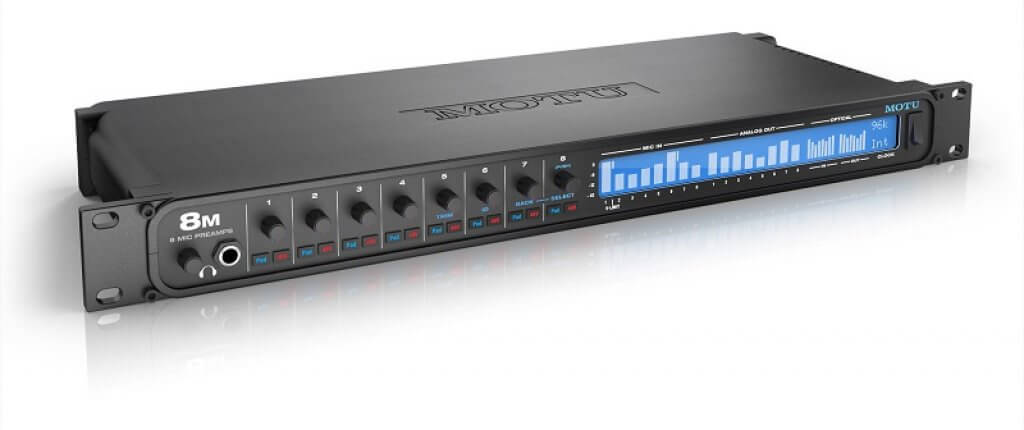
- 8 x Mic / Line / Instrument input Combo XLR / 6.3 mm jack
- 8 x Balanced line output 6.3 mm
- 2 x ADAT input and output with S-MUX
- Word clock input and output
- 1 x Stereo headphone output
| For EU Customers | |||
|---|---|---|---|
MOTU 8M AVB |
|
Buyers Guide
For many of us, upgrading to one of Apple’s newest computers might seem appealing. It may become necessary eventually, but we don’t think Thunderbolt 3 alone is a good enough reason to buy a new computer. In our opinion, the only audio interface that truly takes advantage of Thunderbolt 3 right now is the Arrow.
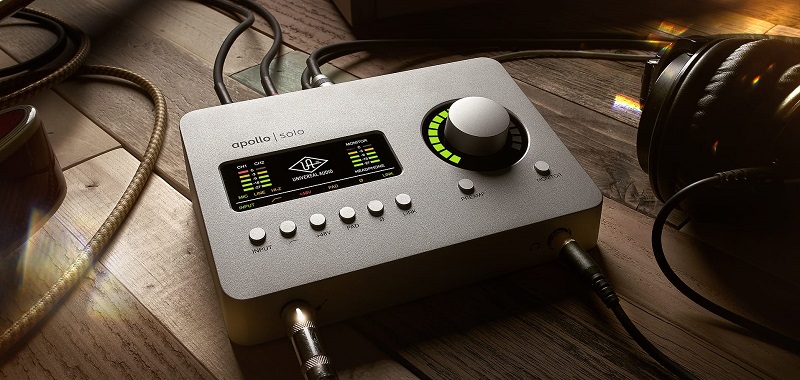
Performance
With the interfaces recommended in this article, you shouldn’t have any problems with sound performance. If you’re considering other models, be sure to check reviews for complaints about sound quality, especially issues like preamp hiss.
Non-professional interfaces often have average-quality preamps. If you push them too hard to make up for a weak audio signal, they can fail and create unwanted interference.
Mic preamps
Whenever you want to record with microphones, you’ll almost always need a microphone preamp. That’s because the electrical signal from a mic is usually too quiet and weak for high-quality recordings. So, as a home recorder, you’ll need at least one preamp.
A microphone preamplifier is important because it boosts the mic signal enough to reach what’s called line level. This stronger signal is what you need for great-sounding recordings.
For the mic preamps built into an audio interface, the main goal is that they should sound as neutral as possible, without adding noise or unwanted coloration. This way, the audio interface can be used for all kinds of recordings. If you want to add more character or color to your sound, you would use an external preamp before anything else, but that’s a more advanced step.
Low latency
As we’ve discussed before, Thunderbolt is the fastest external connection among these three options. This means it has the lowest latency—in other words, there is little to no delay during recording and playback.
For example, with a USB connection, it takes about 4.5 milliseconds for a signal to make a round trip. That sounds pretty fast until you compare it to Thunderbolt. With Thunderbolt, it only takes 1 millisecond—that’s even faster than the time it takes for the sound of a kick drum to reach the drummer’s ear.
Extra reliability
It’s no surprise that Apple and Intel developed Thunderbolt connectivity, and since then, they’ve kept a close watch over the protocol’s creation and use.
Because of this, compatibility is rarely an issue—you can trust that any Thunderbolt device will work just as well with your computer as any other. So, if you have a Thunderbolt-ready audio interface, you can be confident it’ll work with any computer that supports Thunderbolt. In fact, it’s guaranteed.
Conclusion
Based on the introduction and details about these 10 Thunderbolt audio interfaces, it’s clear that Thunderbolt is a powerful option and definitely one of the best choices for professional audio interface work.
In the list above, you’ll find both affordable options and high-end, class A picks—making it easy to find the right Thunderbolt interface for your needs. We hope this guide helps you make an informed choice from our recommended selections.
If you have any questions about this topic, feel free to ask in the comments section. Until then, happy recording and enjoy your workflow!

